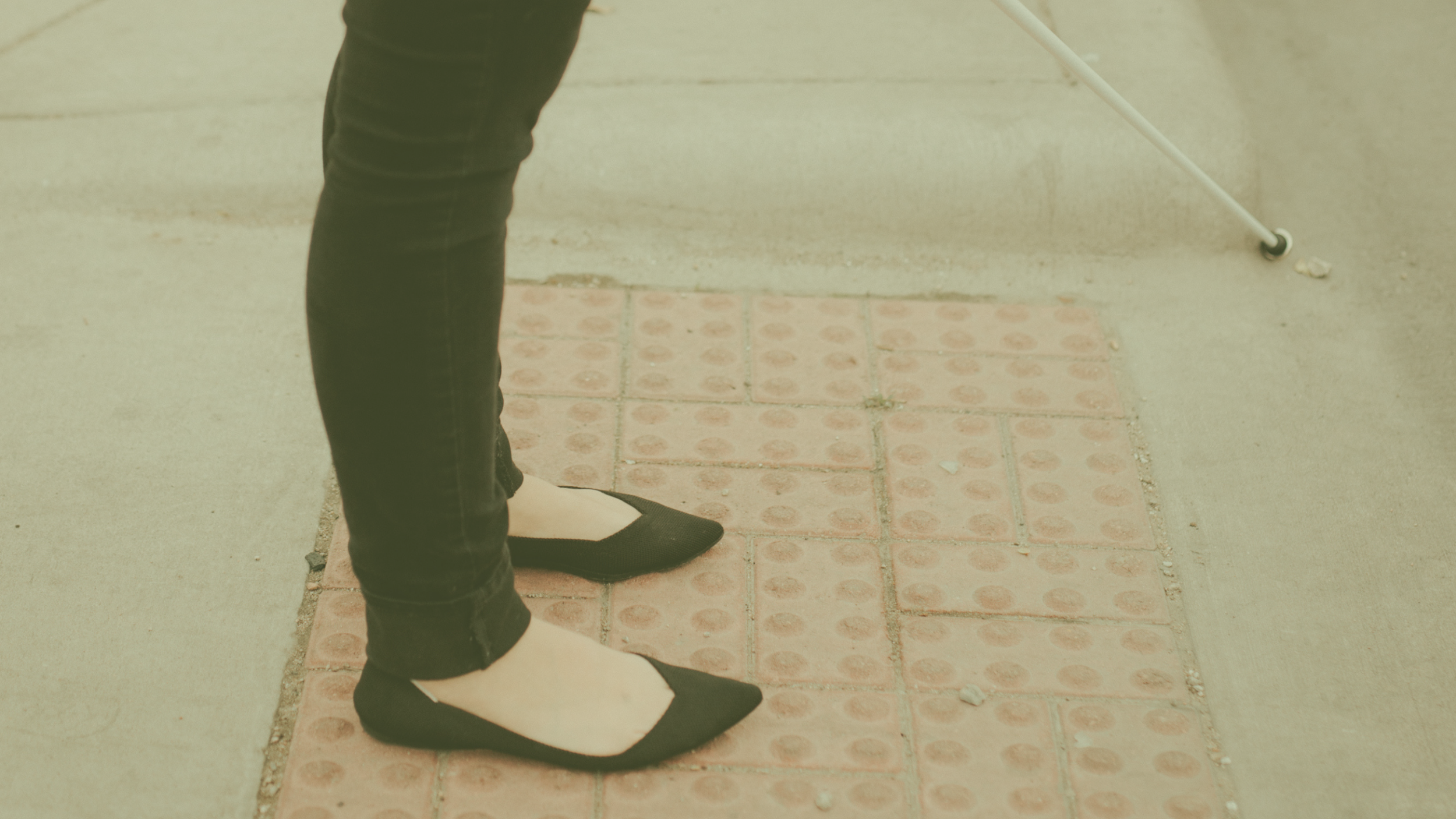How to help your Orientation and Mobility students feel more confident before crossing a street.
Remember when you were in class to become an Orientation and Mobility Specialist and you had to walk next to parallel traffic for the first time? What about the first time you crossed a busy intersection under blindfold? Relying solely on your hearing for what may have been the most difficult challenge that you had faced in your seedling of a career up until that point.
For me, I remember it distinctly. I was in Tallahassee, walking on the sidewalk parallel to the main road that runs through the city. There was grass on my right, the side of the city block. But to my left? Just a curb. No buffer between me and the cars that I could have sworn were 2 inches away from crashing in to me.
We turned right, in to the neighborhood, and immediately had to cross a stop-sign controlled intersection. My stress levels were still so high from walking next to the main road, that I couldn’t even figure out which corner of the intersection I was on. Was it a two way stop? A four way stop? Was that a car in the distance? Was it safe to cross?
I had no idea.
I had no idea simply because I lacked the confidence to cross the street.
What hinders your Orientation and Mobility Students from feeling confident at a street crossing.
When you are traveling with a person who is either just getting used to the idea that they CAN cross an intersection by themselves, or they are just getting used to doing it without vision, crossing intersections can be very frightening.
No amount of tactile mapping the situation prior or role playing in a safe environment (like a school campus) really prepares you for the very first time that you have to cross a busy street on your own.
How can Orientation and Mobility Specialists help their students feel more confident?
Confidence comes from doing the task that is currently outside of your comfort zone. By repeatedly having the experience of success, we become more confident that we have the skills to complete the task.
But that doesn’t necessarily help when our Orientation and Mobility students are being asked to exhibit more and more challenging skills.
As we continue on their Orientation and Mobility curriculum, we present more and more challenging tasks for them to complete. At first, they are asked to walk in a straight line with good cane skills. Then they are asked to cross a stop-sign controlled intersection. As they progress through these skills, new skills are presented for them to master. After they cross the stop-sign controlled intersection, then they are tasked with the challenge of crossing a busy intersection. If they are lucky, at some point, the Orientation and Mobility student is eventually dropped off in an unknown location and asked to put all of those skills together in order to find their way back home.
Imagine being dropped off on an island and asked to find your way back to the mainland? Even though you have all of the skills necessary to survive, it is still a daunting task!
So are we asking our Orientation and Mobility students to stay in a continual state of fear and anxiety before completing the next task in their curriculum?
No way! That would make them less likely to actually get to the coveted drop off lesson.
Here are some ways that I help my Orientation and Mobility Students feel confident before doing any new skill, including crossing streets:
Release the timeline that you previously set for this skill to happen. Whether it’s an IEP goal or a skill that is expected to happen before the end of a student’s programming, the expected skill and date are arbitrary. They were set by someone else other than the person, or at a different date/time than when the person is working towards the skill. We’ve all had instances where the student looks like they aren’t going to meet the IEP goal/expected skill in time and we feel the desire to push them towards it. That’s natural. It’s what we do. We are their guides for their independence. And dang if we aren’t good at getting our students over their own internal obstacles so they can achieve the skills in front of them. Releasing this timeline, emotionally, sounds counter intuitive, but it may actually allow your student to feel more calm and confident as the external pressure is lessened.
Remind them of their WHY. WHY is the skill on the table in the first place? WHY do they want to cross busy intersections? WHY do they need to be able to cross a street? What is in the personal life that can act as a motivator? Do they want to be able to go on a date with that cute boy/girl from class without their parents or friends driving them? Do they want to be able to go to college on their own? Do they want to be an independent member of society and need to be able to get to work by themselves? Reminding them of their own personal reasons why they want to be able to cross a street may give them the push they need to have the sucessful experiences, and thus gain the confidence to do try harder skills.
Bio-hack their bodies. According to Amy Cuddy’s Ted Talk on the subject, your body language may shape who you are. She found that standing in a Power Pose helps give your body the same hormones as a leader. It lowers your stress levels and increases your natural testosterone, giving you a natural sense of confidence.
How to help your Orientation and Mobility Students bio-hack their bodies for more confidence
All of the power poses are actually yoga poses, and vice versa. These yoga poses are very simple to include in your O&M class to help your student with not only their confidence, but whatever other issue they are facing.
This is something we talk a lot about in our program, Root to Rise: Developing O&M Skills with yoga. Here is the basic run down of how to include power poses in your Orientation and Mobility classes, so your students can feel an immediate feeling of confidence.
Right before you get to the intersection, have your student stand with their legs a little bit wider than hips with distance apart. Have your student place their hands on their hips and stick their chest out. Have them breathe there for 1-2 minutes. It may seem like the longest 1-2 minutes of your life, but trust me, it’s worth it.
Now that they have the hormone fluctuations of a leader, they may be able to complete the street crossing faster!
Try it out and let me know what you think. It’s a really easy fix to an eternal issue.
If you are interested in learning more about how to bring power poses or other yoga poses in to your O&M Class, check out our free mini-course, “How to include yoga in your O&M class”, happening live from June 3-June 14!
The 1 hour pre-recorded webinar will give you a full 5 minute yoga sequence that you can share with any of your Orientation and Mobility students. The ½ hour live strategy session will help you understand HOW to include the yoga sequence or any yoga poses in to your students’ O&M class so you can help them skyrocket their success faster.















